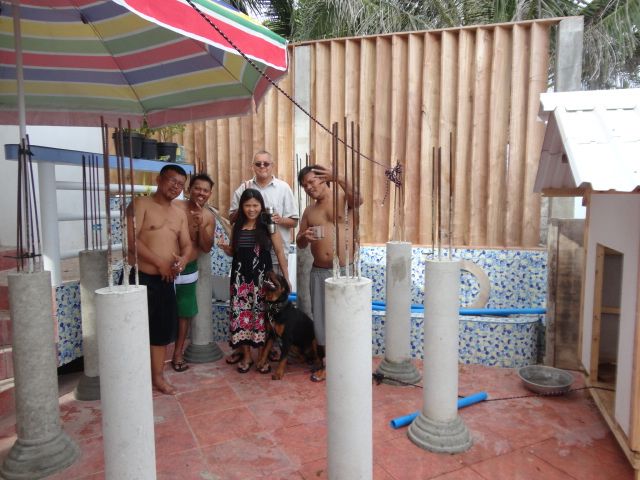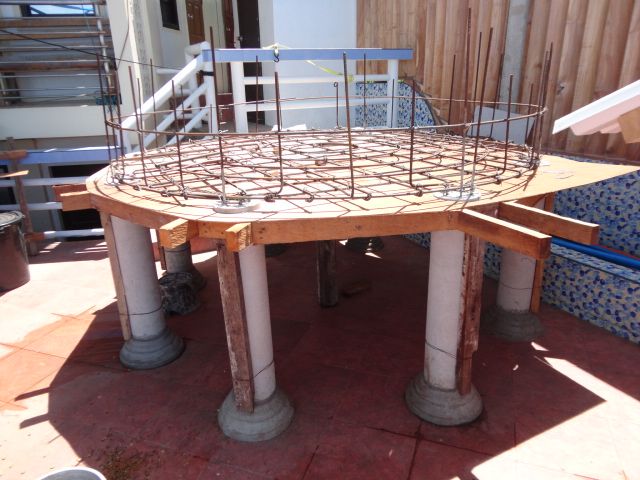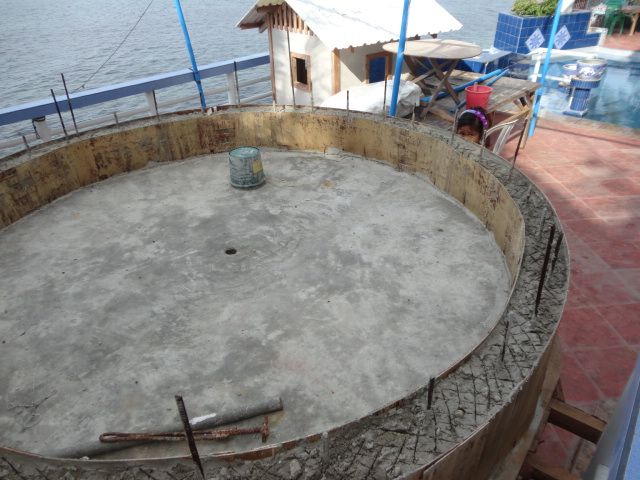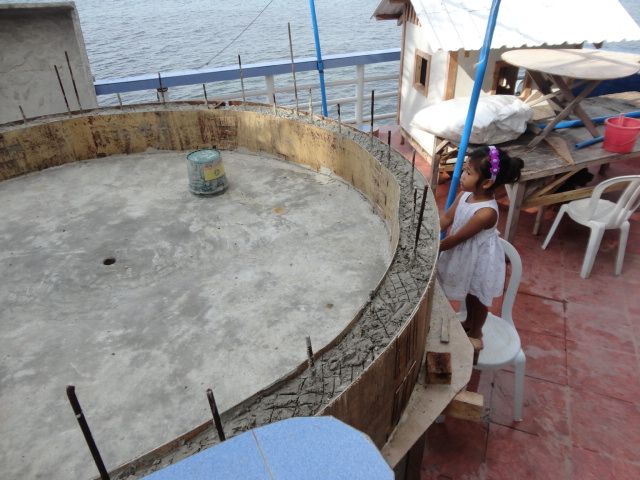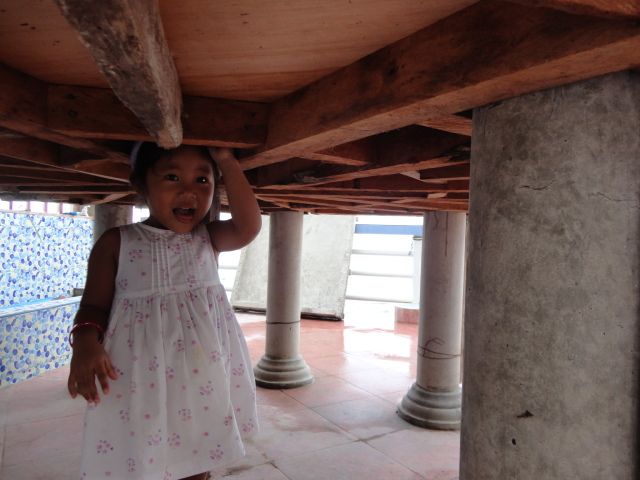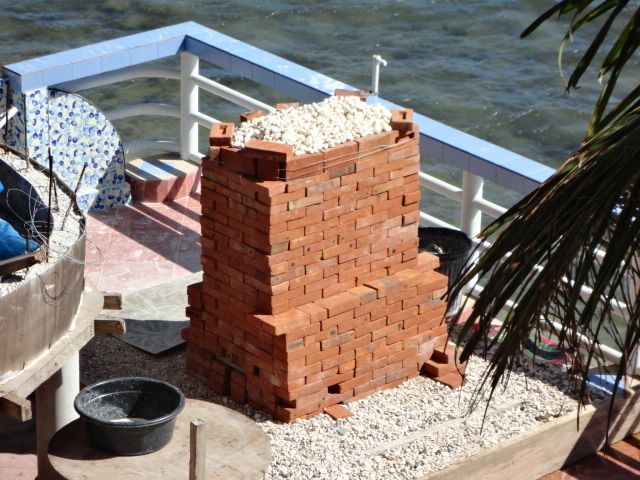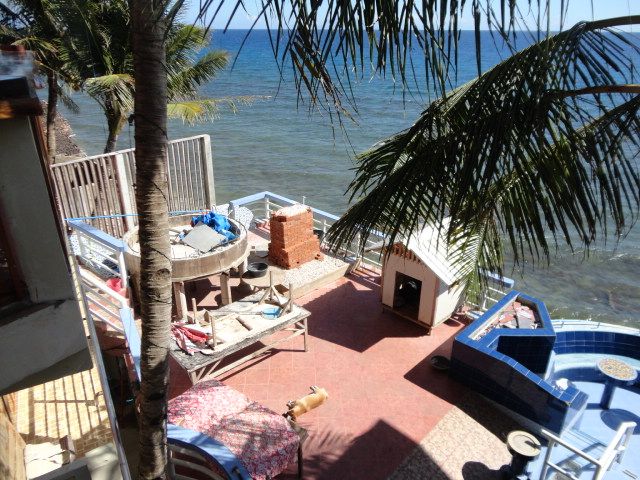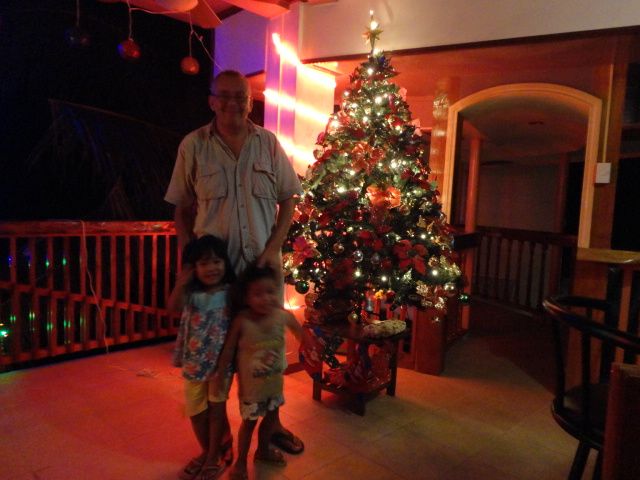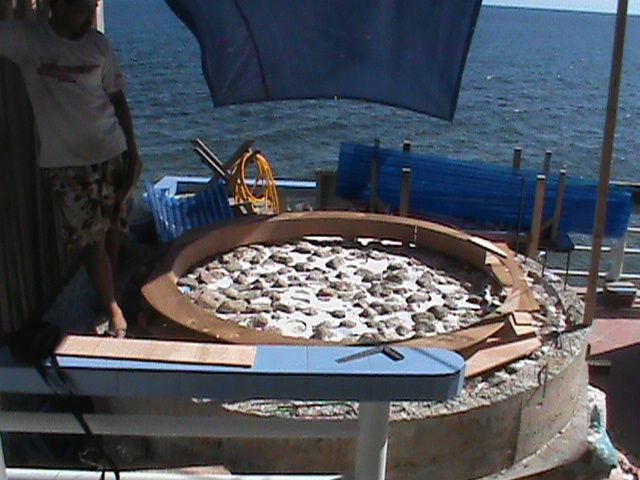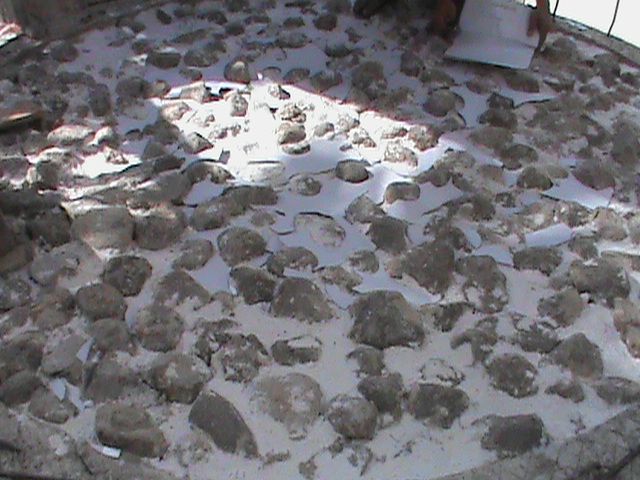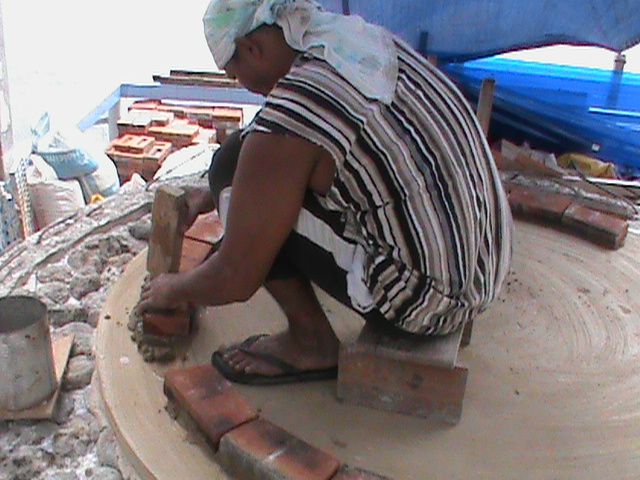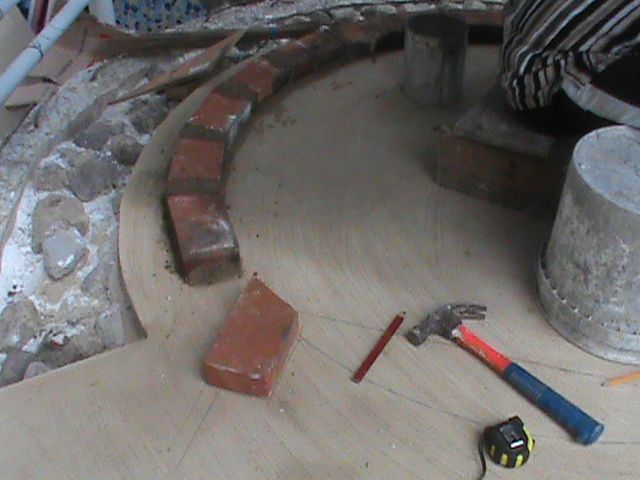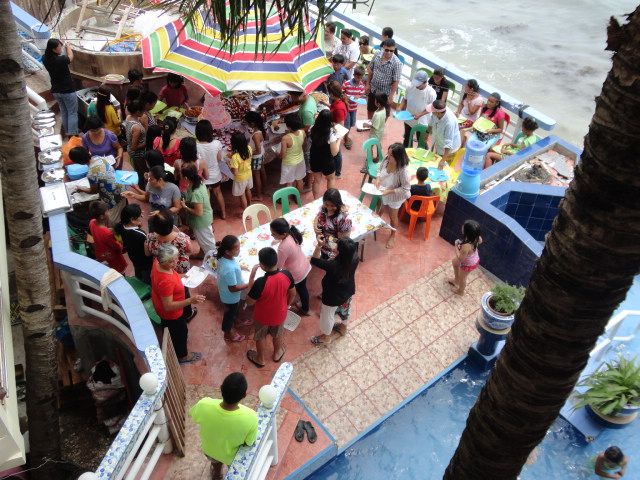This is a project I'm designing as we go and my brother in law, Bonifacio (Sho) is building. Born in NYC, grew up in New Jersey before moving to Oregon, I know good New York style pizza.
Many things available to anyone with a large home center nearby are not to be found here on Bohol island in the Philippines. If you go to build one of these consider yourself lucky at what can be easily had! Some parts of this project caused me sleepless nights. The bricks we're using are made by a potter and fired in a kiln he built outside his house, hopefully mixed and fired to my specifications. You can buy refractory fire bricks, no problem. The pumice (cooled lava) insulation that is under the brick oven was hand picked at a volcano I can see from my home, across the Bohol Sea. We took my van and Sho's small pickup on a RORO ship and went and got the stuff, 35 cements sacks of it, one piece at a time. You can tell pumice from a rock because it floats and is lightweight. Red clay is dug out of the ground by the potter and provided by the bag as is silicate. River sand from deposits in the hills, gravel from the beach, and finally perlite, also from a volcano, was found in quantity from a hardware store, the last place I hadn't checked. Cooked (slaked iirc) limestone heated to a thousand degrees I tried to make myself in a home made kiln using the potters bricks, a failure as there is no coal here. Found it in 5 gallon buckets described as a stucco like material. 95% are needed refractory materials.
Its been a journey.
A pizza oven cooks pizza around 750F plus. Many things such as Portland Cement break down at these temps. That means new materials I've never worked with before, some taken directly from the Earth. Interestingly volcanoes produce some excellent heat resistant or 'refractory' materials.
Some of this project is behind me so I'll be starting with pics from the past and working towards the ever advancing present.
Myself, my wife and her 3 brothers and our Rottweiler, Gary. Sho is on the right.
The round posts are built by pouring concrete into rolled sheet metal forms which were held in shape by squares of plywood with circles cut out to the size of the post. The plywood was held in place by 2x3 frames which were connected to each other to provide support. Since we built this on a tiles floor which sits on solid packed limestone it was necessary to cut into the floor and hollow out a space under each post to form a foundation. The foundations are rough circles 2' across and under the floor. This is not exposed to high temps or direct fire so its standard concrete. We mix 1 Portland, 3 sand, and 4 gravel. The bar is 10mm.
The table is prepared for the pour, same recipe.
Post pour. We're adopting 2 kids, brother and sister. Abby (4) is checking out the build.
What's dis Tatay (papa)?
That's it for today. Please ask whatever questions and I'll try to answer as best I can.






